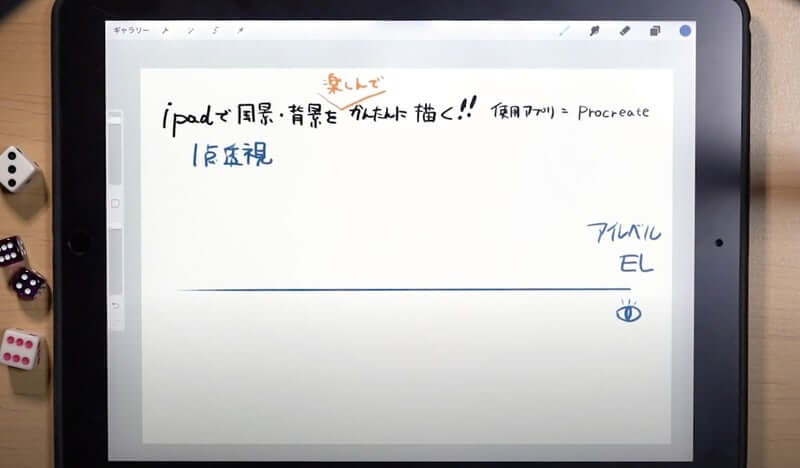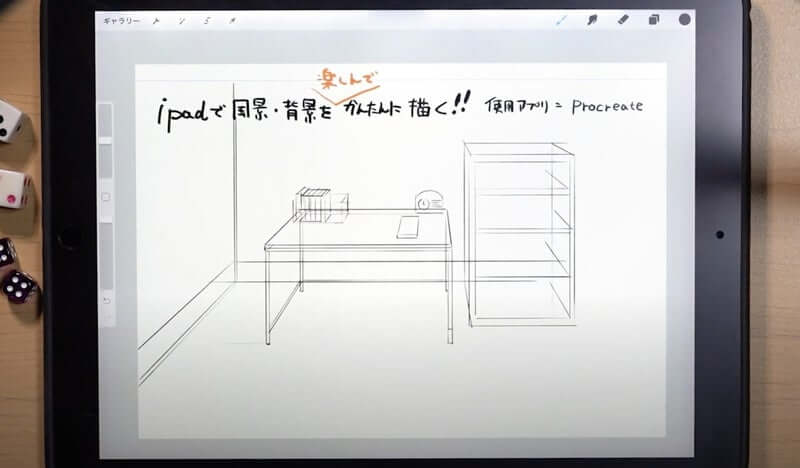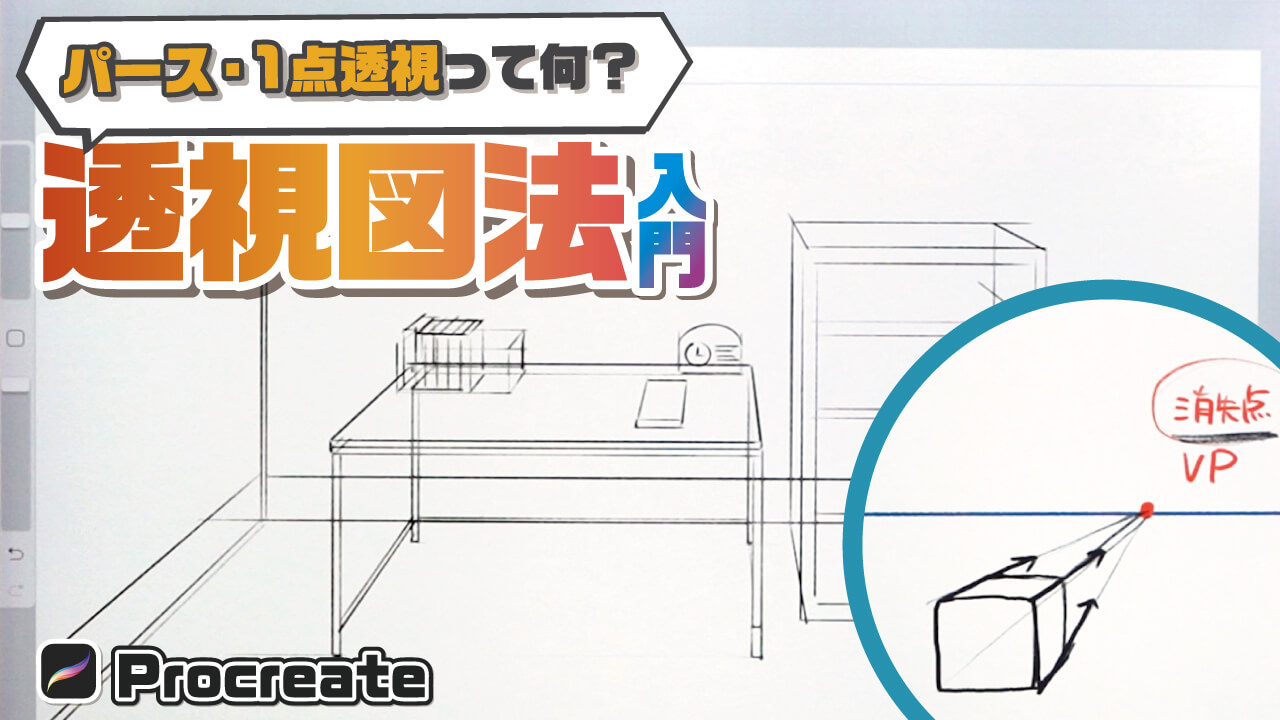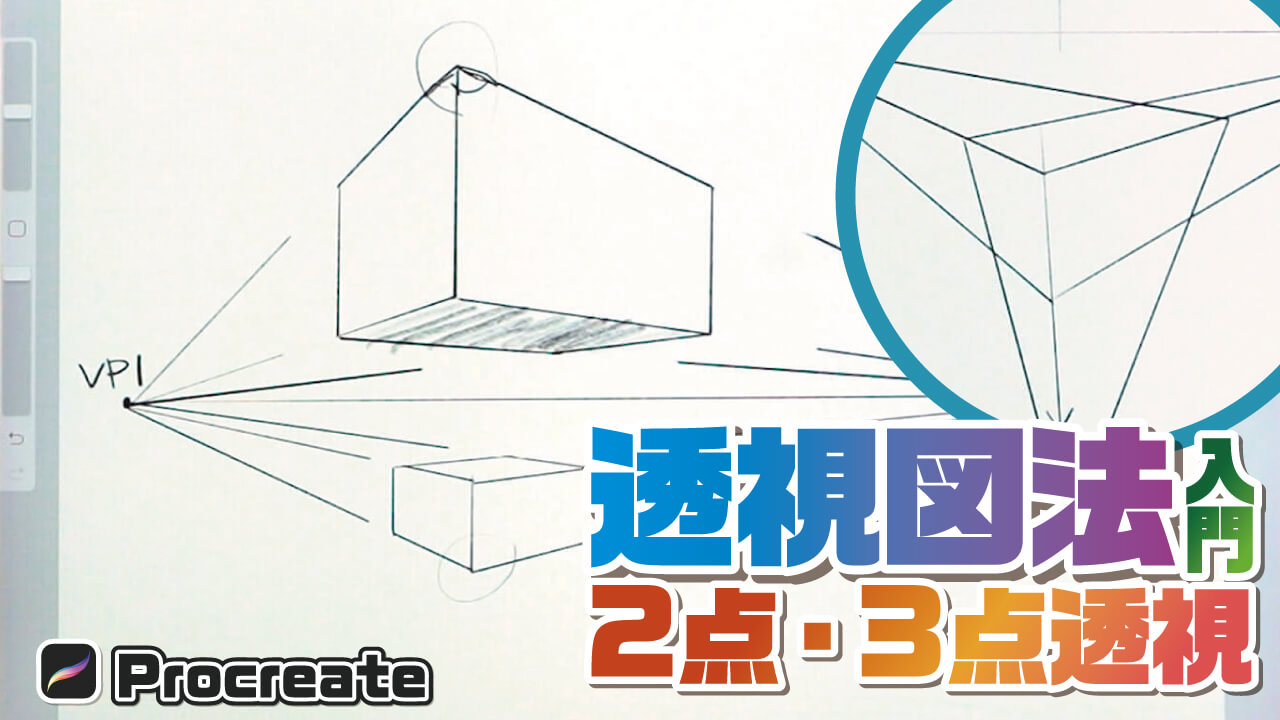I am Ari, a Concept Artists.
Starting this time, I will upload articles explaining Environment Art based on videos uploaded on my YouTube channel.
In this first article, I will briefly explain perspective and perspective.
The equipment and apps used in this article are iPad and Procreate; please try Adobe Photoshop, CLIP STUDIO PAINT, and other apps as well, as you can also draw by applying the concept.
If you are not sure which illustration app to use, please refer to this page. Here is a summary of recommended apps.
The video provides detailed explanations. If you want to check it out thoroughly, please click here.
What is perspective?
When drawing Environment Art, it is important to keep perspective in mind, which is the theme of this article.
If you are a painter, you have probably heard a lot about perspective itself.
To put it simply, perspective is “a method of drawing a picture with a sense of perspective.
There are various types of perspectives.
Types of perspective (examples)

●Superimposition
●Aerial perspective
●Line perspective
Other rules, such as the rule that images appear smaller when they are farther away and larger when they are closer to the subject, are also examples of perspective. The above-mentioned perspective is one of the general terms.
The above perspective is often collectively referred to as perspective.
Among them, line perspective, which is the perspective in which lines are pulled, maybe the closest to the image of perspective.
Each perspective is explained in the video above, so please take a look.
From here, I will explain in more detail about line perspective, which is often used in perspective.
Explanation of 1-point perspective
First of all, we will explain the basic “one-point perspective”.
The rule of one-point perspective is that the object’s edges disappear into the horizon.
Therefore, it is necessary to set a line called the eye level, which is a line like a horizon line, in order to draw.
Be aware of the eye level

When drawing a perspective drawing, be aware of the eye level at all costs!
As the name suggests, eye level is the line at the level of the eye, and it is one of the most important elements when drawing a background.
This can be easily set by carefully considering the setting of how high you are looking at the screen and deciding on the height.
Let’s decide the vanishing point (VP).

After setting the eye level, the next step is to determine the vanishing point (VP).
The vanishing point is the point where the edges of the object converge and disappear as described above, so it is easy to remember if you think of it as the “vanishing point!
The edges of any object will converge to the vanishing point set here.
Let’s draw an edge extending to the VP.

Converge the edges extending toward the back of the object to VP.
As shown in the picture above, you can draw a one-point perspective illustration by converging the edges extending from the corners of an object (in this case, a cube) toward the back of the object to the VPS.
Since this is the only rule, the technique is very easy to understand.
However, by using this technique properly, you can create a neat Environment Art, so please give it a try.
You will understand it better if you draw not only rectangles but also various other shapes with a one-point perspective!
Illustration of furniture in one-point perspective

In the above picture, a desk and a shelf are drawn in one-point perspective.
It may look more difficult than a simple square, but it is basically a combination of rectangles, so it is easy to draw if you are aware of it.
Please check out the video on YouTube to see how the drawing is done.
Detailed Explanation Video
The video provides detailed explanations. If you want to check it thoroughly, please click here.
Conclusion
This time, we have explained perspective and perspective.
Both are important in drawing Environment Art, so I hope you will find them useful when drawing illustrations.
While there are many techniques involved in Environment Art, and they can be difficult, I am happy to say that once you learn them, you will be able to draw them to a certain extent!
I will continue to explain more about Environment Art in the future.
Thank you for watching until the end.
See you next time!



